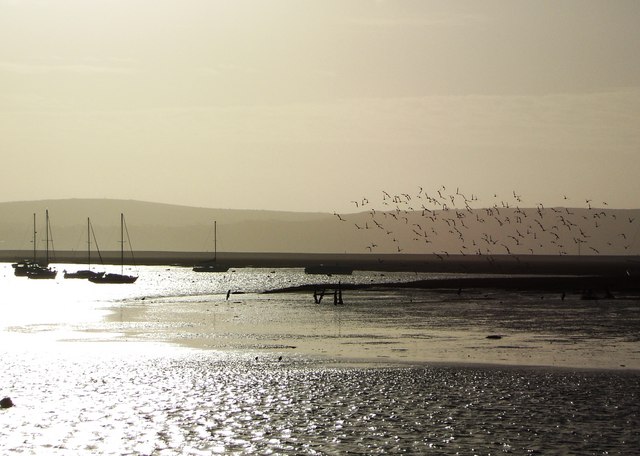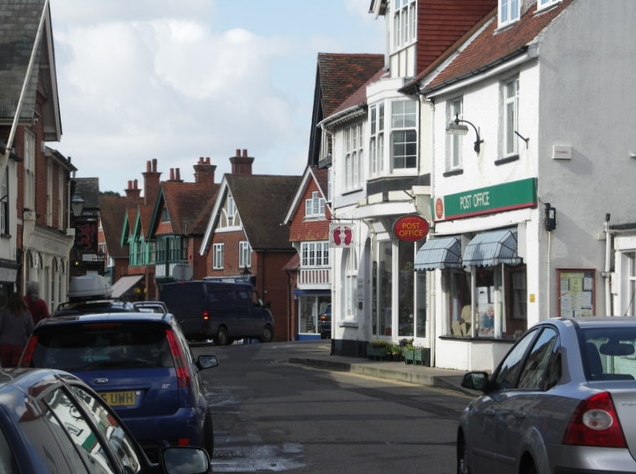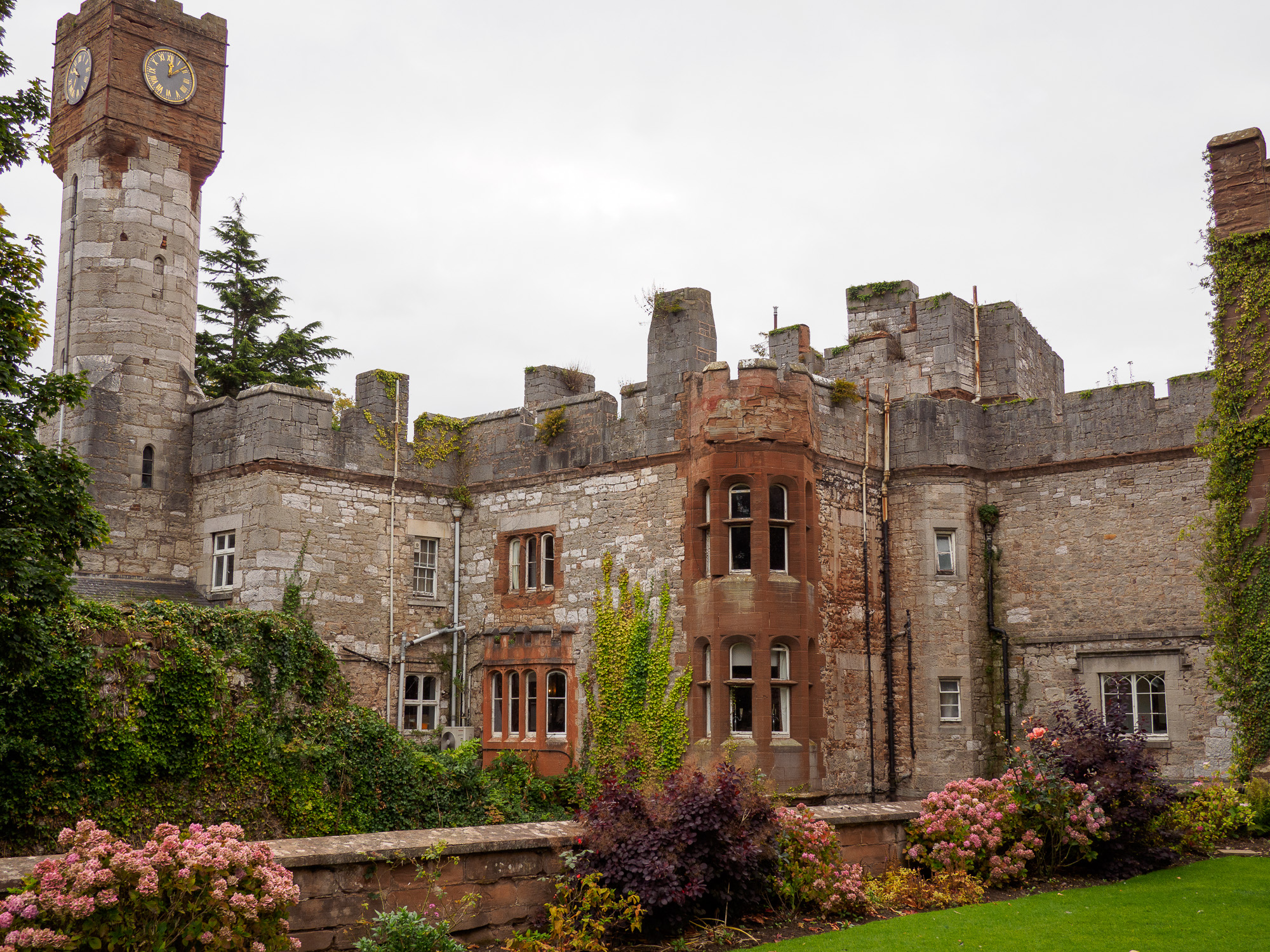|
Keyhaven
Keyhaven is a hamlet on the south coast of England in the county of Hampshire. It is a fishing village, but the trade has been in decline for a period of years and its main draw now is tourism, especially sailing. Overview Keyhaven lies in the district of the New Forest and is just within the borders of the New Forest National Park. It is in the civil parish of Milford-on-Sea, and it lies at one end of the shingle bank known as Hurst Spit which leads to Hurst Castle. Keyhaven draws visitors through its outstanding natural beauty, from the views over the Solent to the abundance of open farm land. To the east of Keyhaven lies the nature reserve of Keyhaven marshes. History The name "Keyhaven" means ‘Harbour where cows are shipped’; OE ''cū'' (genitive ''cȳ'') + ''hæfen''. Cattle and sheep were transported from the Isle of Wight to the water meadows of the Avon around Christchurch. Keyhaven was a port as early as 1206. There seem to have been two manorial estates he ... [...More Info...] [...Related Items...] OR: [Wikipedia] [Google] [Baidu] |
Hurst Spit
Hurst Spit is a shingle bank near the village of Keyhaven, at the western end of the Solent, on the south coast of England. The spit shelters an area of saltmarsh and mudflats known as Keyhaven and Pennington marshes. At the end of the spit is Hurst Castle, an artillery fortress originally built on the orders of King Henry VIII, and much enlarged in the 19th century. Hurst Point Lighthouse was built on the end of Hurst Spit in the 1860s. Geography Hurst Spit is a hook-shaped shingle spit which extends for from the Hampshire shore into the Solent towards the Isle of Wight. The spit forms a barrier which shelters a Site of Special Scientific Interest known as Hurst Castle And Lymington River Estuary. To reach the end of the spit one can either catch the seasonal ferry from Keyhaven, or follow the footpath (part of the Solent Way) along the top of the spit. The sea route past Hurst Spit can be hazardous to boats because the constriction to the tidal flow caused by the spit ... [...More Info...] [...Related Items...] OR: [Wikipedia] [Google] [Baidu] |
Milford-on-Sea
Milford on Sea, often hyphenated, is a large coastal village and civil parish in the New Forest district, on the Hampshire coast, England. The parish had a population of 4,660 at the 2011 census and is centred about south of Lymington. Tourism and businesses for quite prosperous retirees as well as the care sector make up large parts of its economy. Businesses include restaurants, cafés, tea rooms, small shops, garden centres, pubs and camping/lodge/caravan parks, bed-and-breakfasts and a few luxury hotels. Shops cluster on its small high street, which fronts a village green. The western cliffs are accessed by flights of steps. In common with the flatter coast by the more commercial and eastern part of Milford, they have car parks with some facilities, which, along with many apartment blocks and houses, have close views of The Needles, which are the main, large chalk rocks immediately next to the Isle of Wight. Its western coast is a large bank of shingle below green cliff ... [...More Info...] [...Related Items...] OR: [Wikipedia] [Google] [Baidu] |
Keyhaven Marshes
Keyhaven, Pennington, Oxey and Normandy Marshes, also known as the North Solent Marshes, are three areas of saltmarsh in Hampshire, England. The haven outpost of Milford-on-Sea, Keyhaven sits to the west, the village of Pennington, Hampshire, Pennington to the north, and the town of Lymington to the northeast. The marshes lie behind Hurst Spit and fall within the Hurst Castle And Lymington River Estuary Site of Special Scientific Interest, Hurst Castle And Lymington River Estuary Site of Special Scientific Interest. History The marshes were once used as salterns for the thriving salt industry. The salterns are first mentioned in 1132, and continued in use until 1865. They were replaced by oyster beds, but are now disused marshland with some enclosing banks. A circular mound 1.2 metres high and 12 metres across is all that remains of a mill, and there is another mound with an overgrown brick structure and rectangular pond of unknown date. Just north of the marshes, in Lower Pennin ... [...More Info...] [...Related Items...] OR: [Wikipedia] [Google] [Baidu] |
Fort Victoria (Isle Of Wight)
Fort Victoria is a former military fort on the Isle of Wight, England (), built to guard the Solent. The earliest fort on the site was a coastal fort known as Sharpenode Bulwark built in 1545–1547 by Henry VIII, but these defences had fallen into disrepair by the 17th century. Fort Victoria was built in the 1850s. It was a brick-built triangular fort with two seaward batteries meeting at a right angle. It remained in use until 1962. Parts of the fort were subsequently demolished; areas of the fort that were preserved have become part of Fort Victoria Country Park. Location Fort Victoria is situated on Sconce Point west of Yarmouth. Its position overlooks the whole of the Needles Passage and approaches to Yarmouth, and is almost opposite Hurst Castle on the mainland. Around to the southwest lies Fort Albert. Earlier forts The earliest fort on the site was Sharpenode Bulwark (also Sharpnode or Sharpnore) which was constructed in 1545–1547 as part of Henry VIII's coastal d ... [...More Info...] [...Related Items...] OR: [Wikipedia] [Google] [Baidu] |
Hurst Castle
Hurst Castle is an artillery fort established by Henry VIII on the Hurst Spit in Hampshire, England, between 1541 and 1544. It formed part of the king's Device Forts coastal protection programme against invasion from France and the Holy Roman Empire, and defended the western entrance to the Solent waterway. The early castle had a central keep and three bastions, and in 1547 was equipped with 26 guns. It was expensive to operate due to its size, but it formed one of the most powerful forts along the coast. During the English Civil War of the 1640s, Hurst was held by Parliament and was used briefly to detain King Charles I before his execution in 1649. It continued in use during the 18th century but fell into disrepair, the spit being frequented by smugglers. Repairs were made during the Revolutionary and Napoleonic Wars with France, and the castle was modernised to enable it to hold 24-pounder (10.8 kg) guns. Fresh fears of invasion followed in the 1850s, leading to heav ... [...More Info...] [...Related Items...] OR: [Wikipedia] [Google] [Baidu] |
New Forest (district)
New Forest is a local government district in Hampshire, England. Its council is based in Lyndhurst, although the largest town is Totton. The district also includes the towns of Fordingbridge, Lymington, New Milton and Ringwood. The district is named after and covers most of the New Forest National Park, which occupies much of the central part of the district. The main urban areas are around the periphery of the forest. The district has a coastline onto the Solent to the south and Southampton Water to the east. The neighbouring districts are Bournemouth, Christchurch and Poole, Dorset, Wiltshire, Test Valley, Southampton and Eastleigh (across Southampton Water). The district also faces the Isle of Wight across the Solent. History The district was created on 1 April 1974 under the Local Government Act 1972, covering the whole area of two former districts and most of a third, which were all abolished at the same time: *Lymington Municipal Borough * New Forest Rural District ... [...More Info...] [...Related Items...] OR: [Wikipedia] [Google] [Baidu] |
Bishop Of Salisbury
The Bishop of Salisbury is the Ordinary (officer), ordinary of the Church of England's Diocese of Salisbury in the Province of Canterbury. The diocese covers much of the counties of Wiltshire and Dorset. The Episcopal see, see is in the Salisbury, Wiltshire, City of Salisbury where the bishop's seat is in the Salisbury Cathedral, Cathedral Church of the Blessed Virgin Mary. The current bishop is Stephen Lake. History The Diocese of Sherborne (founded ) was the origin of the present diocese; Aldhelm, St Aldhelm was its first bishop. In about 705 the vast diocese of Wessex at Winchester was divided in two with the creation of a new diocese of Sherborne under Bishop Aldhelm, covering Devon, Somerset and Dorset. Cornwall was added to the diocese at the end of the ninth century, but in about 909 the diocese was divided in three with the creation of the bishoprics of Bishop of Wells, Wells, covering Somerset, and Bishop of Crediton (ancient), Crediton, covering Devon and Cornwall, l ... [...More Info...] [...Related Items...] OR: [Wikipedia] [Google] [Baidu] |
William Cornwallis-West
Colonel William Cornwallis Cornwallis-West, (20 March 1835 – 4 July 1917) was a British landowner, politician for seven years from 1885 and raised the 6th (Ruthin) Denbighshire Rifle Volunteer Corps followed by further ceremonial duties in the wider territorial army in Wales. Early life (William) Cornwallis West was born on 20 March 1835 at Florence. He was the son of Frederick Richard West, a Tory MP for Denbigh Boroughs and East Grinstead who was a member of the Canterbury Association, and his wife, Theresa Cornwallis Whitby. His father first married Lady Georgiana Stanhope (a daughter of Philip Stanhope, 5th Earl of Chesterfield). A scion of the De La Warr Wests, his paternal grandfather was Frederick West (a son of John West, 2nd Earl De La Warr). His maternal grandparents were both Royal Navy figures: Captain John Whitby and Mary Anne Theresa Symonds (adoptive daughter and heiress of Admiral William Cornwallis). Following his education at Eton, he returned ... [...More Info...] [...Related Items...] OR: [Wikipedia] [Google] [Baidu] |
Sir John D'Oyly, 6th Baronet
Sir John Hadley D'Oyly, 6th Baronet (January 1754, Ipswich – 5 January 1818, Calcutta, Bengal, British India) was a politician in Great Britain. He primarily inherited debt when his father died when he was ten, but through family connections had a successful career with the East India Company. Returning to Ipswich a wealthy man, he settled his fathers debts and aligned himself with the Ipswich Yellow Party. He served as the MP for the town for several years in the 1790s. He returned to India in 1803 where he lived until his death in 1818. Early life His father, Hadley D'Oyly, was rector of Wotton and Felixstowe. His mother was Henrietta Maynard Osborne, daughter of Reverend Henry Osborne, the Vicar of Thaxted, Essex. His father died when John was ten years old, only leaving debt as a legacy. His mother educated him herself until through the influence of Charles Bunbury, John entered the service of the East India Company (EIC) in 1769 as a "writer", i.e. a junior clerical ... [...More Info...] [...Related Items...] OR: [Wikipedia] [Google] [Baidu] |
Salt
In common usage, salt is a mineral composed primarily of sodium chloride (NaCl). When used in food, especially in granulated form, it is more formally called table salt. In the form of a natural crystalline mineral, salt is also known as rock salt or halite. Salt is essential for life in general (being the source of the essential dietary minerals sodium and chlorine), and saltiness is one of the basic human tastes. Salt is one of the oldest and most ubiquitous food seasonings, and is known to uniformly improve the taste perception of food. Salting, brining, and pickling are ancient and important methods of food preservation. Some of the earliest evidence of salt processing dates to around 6000 BC, when people living in the area of present-day Romania boiled spring water to extract salts; a salt works in China dates to approximately the same period. Salt was prized by the ancient Hebrews, Greeks, Romans, Byzantines, Hittites, Egyptians, and Indians. Salt became a ... [...More Info...] [...Related Items...] OR: [Wikipedia] [Google] [Baidu] |






